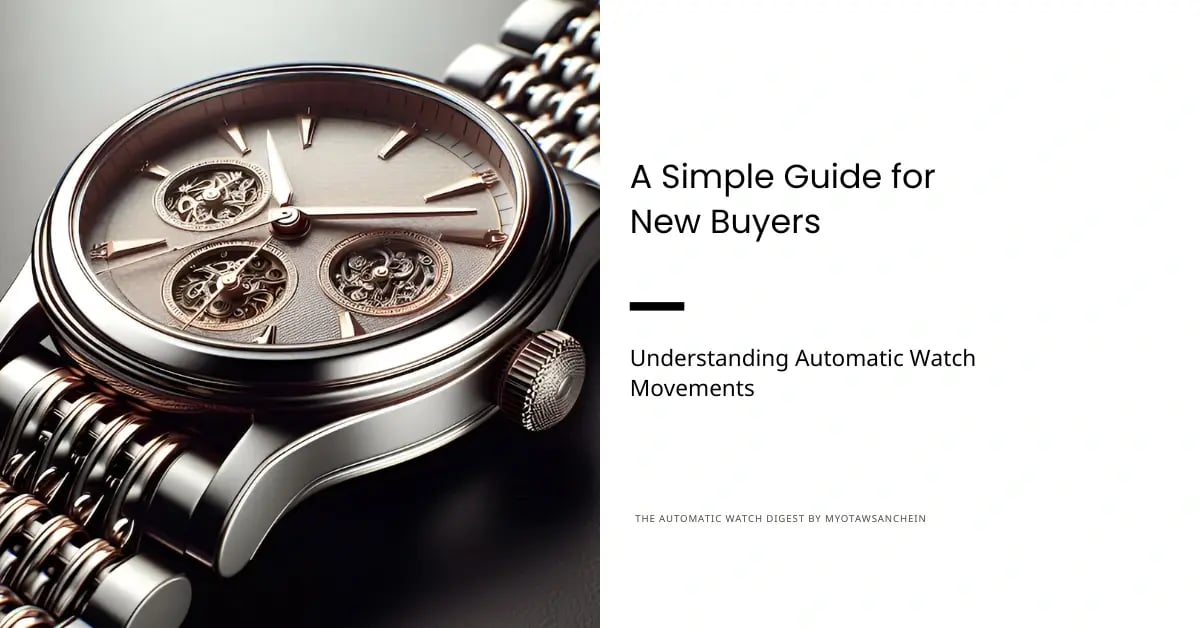
Why Your Automatic Watch Runs Fast or Slow- and How to Fix It?

Automatic watches are admired for their intricate mechanics and timeless appeal, but even the finest timepieces can sometimes run fast or slow. If you’ve noticed your automatic watch gaining or losing time, you’re not. This is a common concern among watch owners. Understanding the causes behind these timing issues and knowing how to address them can help you keep your watch performing at its best.
Is It Normal for Automatic Watches to Run Fast or Slow?
First, it’s important to recognize that some deviation is normal. Most automatic watches are rated to run within a certain range, often 20/+40 seconds per day, depending on the movement’s quality and age. A few seconds off each day is typical for mechanical watches and part of the ownership experience. However, if your watch is gaining or losing more than a minute per day, or if the rate changes suddenly, it’s time to investigate further.
Common Reasons Your Automatic Watch Runs Fast or Slow
1. Insufficient Power Reserve
Automatic watches rely on the movement of your wrist to stay wound. If you’re not wearing your watch enough (less than 8–10 hours a day) or if your daily activity is minimal, the watch may not have enough power, causing it to run slow or even stop. Conversely, a lightly wound mainspring can sometimes make a watch run fast due to changes in amplitude.
Solution:
Manually wind your watch 20–40 times before wearing it, especially if it hasn’t been worn for a while. Regular wear or using a watch winder can also help maintain optimal power.
2. Magnetization
Exposure to magnetic fields from everyday electronics (phones, speakers, laptops) can magnetize the delicate hairspring inside your watch, causing it to stick and run fast or erratically. This is a frequent cause of sudden, significant timing errors.
Solution:
Have your watch checked and demagnetized by a professional, or use a watch demagnetizer at home following proper instructions.
3. Physical Shocks and Impacts
Dropping or knocking your watch can damage internal components, particularly the hairspring or balance wheel, leading to fast or slow running. Even watches with shock resistance aren’t immune to strong impacts.
Solution:
Avoid wearing your watch during high-impact activities. If you suspect damage, have the movement inspected and repaired by a watchmaker.
4. Lubrication and Maintenance Issues
Over time, the oils inside your watch dry out or become contaminated, increasing friction and causing the watch to run slowly. In some cases, excess or misplaced lubricant can make the hairspring stick together, causing the watch to run fast.
Solution:
Service your automatic watch every 3–5 years. Regular maintenance includes cleaning, re-oiling, and replacing worn parts to ensure smooth operation.
5. Dirt, Dust, or Foreign Matter
Particles inside the movement can jam the gear train, causing erratic timekeeping or making the watch run slow. This is often linked to a lack of maintenance or exposure to dirty environments.
Solution:
Professional cleaning and servicing will remove contaminants and restore accuracy.
6. Regulation Issues
The regulator inside your watch adjusts the speed at which the balance wheel oscillates. If it’s set incorrectly, your watch may run fast or slow. Regulation can also be affected by how you wear the watch, as position changes can impact the rate.
Solution:
A watchmaker can fine-tune the regulator for optimal accuracy. Some watches allow careful DIY regulation, but this requires special tools and experience.
How to Fix a Fast or Slow Automatic Watch
Step-by-Step Solutions
1. Check Power Reserve:
Wind your watch fully and wear it for a day. Monitor accuracy over 24–48 hours.
2. Demagnetize:
If your watch suddenly starts running fast, have it demagnetized.
3. Avoid Shocks:
Remove your watch during sports or heavy activity.
4. Service Regularly:
Schedule professional servicing every few years to clean, lubricate, and adjust the movement.
5. Regulate the Watch:
If you’re experienced, you can carefully adjust the regulator to fine-tune the rate. Otherwise, have a professional handle this.
When to Seek Professional Help
- Your watch is gaining or losing more than a minute per day.
- There are sudden, significant changes in accuracy.
- You notice condensation, dirt, or damage inside the case.
- DIY regulation doesn’t solve the problem.
Professional watchmakers have specialized equipment to diagnose, regulate, and repair mechanical watches to restore precise timekeeping.
Conclusion
Automatic watches are precision instruments, but even the best can run fast or slow due to power issues, magnetization, shocks, lubrication problems, or regulation errors. By understanding these causes and following the solutions above, you can keep your watch accurate and reliable for years to come.
With regular care and timely servicing, your automatic watch will continue to be a dependable companion-keeping time as beautifully as it was designed to do.


